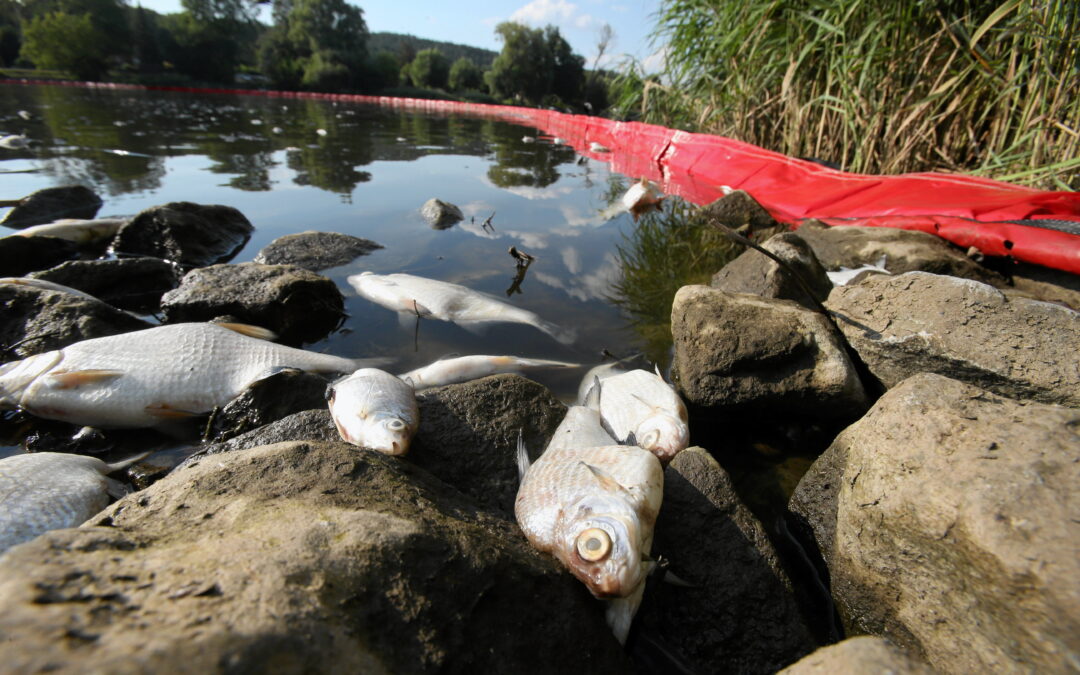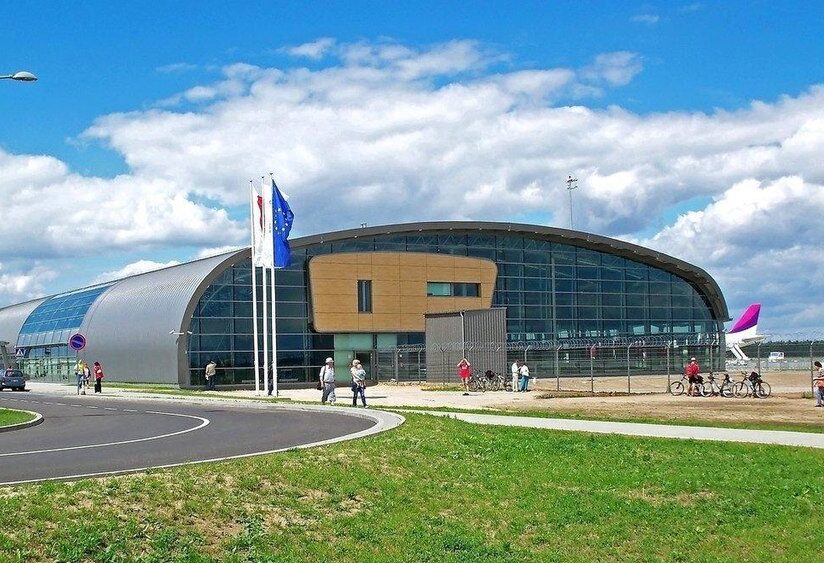Industrial waste was a “key factor” in the ecological catastrophe that saw hundreds of thousands of fish killed in the Oder river last summer, an EU report has found. It also notes that poor communication by the authorities hampered the response to the disaster.
The authors warn that the incident – which was “one of the largest ecological disasters in recent European river history” – should be a “wake-up call” leading to better management of the Oder river, which runs through Poland and then along the border with Germany.
The environmental crisis in the Oder river offers an opportunity to learn from the longstanding failings that allowed it to happen.
But Poland's government seems determined to portray it as a natural rather than man-made disaster, writes @WojciechKosc https://t.co/9yyZXl9Jpm
— Notes from Poland 🇵🇱 (@notesfrompoland) October 12, 2022
“It is clear that this ecological disaster was not only a natural phenomenon but was caused by a multitude of factors, many of which are of human origin,” notes the report, published by the European Commission and European Environment Agency.
The authors point out that the official Polish report into the crisis, which was published last September, “does not [give] much attention” to such manmade causes.
Poland’s environment ministry blamed “many overlapping factors” for causing the catastrophe. Germany, however, made clear in its own report published at the same time that “human activity” was responsible.
Poland's environment ministry yesterday announced that "many overlapping factors" contributed to the ecological disaster in the Oder river and that it "cannot yet answer all the questions".
It also found algal blooms to be a cause of mass fish die-offs https://t.co/lR2vNUhUIz
— Notes from Poland 🇵🇱 (@notesfrompoland) September 30, 2022
All reports do agree that the ultimate cause of the mass die-off – which saw 360 tonnes of dead fish wash up in the river – were algal blooms which produced toxins that damaged the ecosystem.
The EU’s findings acknowledge that some of the conditions that caused the algae, Prymnesium parvum, to bloom were caused by environmental factors, including drought, high water temperatures and low water flow.
But “a key factor that enabled the proliferation of this species was the high salinity of the Oder river during this time, probably due at least partly to discharges of industrial wastewater with a high salt content e.g. from mining activities”, note the authors.
"Marches of mourning" have been held in Polish cities amid the poisoning of the Oder river, where over 100 tonnes of dead fish have washed up .
"This is not just an environmental disaster, it is a disaster of the Polish state," says one activist https://t.co/TTfift5swk
— Notes from Poland 🇵🇱 (@notesfrompoland) August 23, 2022
They add that, for now, it remains impossible to pinpoint the precise origin of the pollution – in part because, at the time the report was published, Poland was still collecting relevant data on wastewater discharge on its territory.
However, the “most likely…source of anthropogenic emissions of effluents with elevated salt loads” is the Gliwice canal, a waterway that runs through one of Poland’s most industrialised areas, the Upper Silesian Industrial Region, and then into the Oder river.
Among other factors that led to the crisis, the EU points to “hydromorphological modifications to the river” and “high nutrient concentrations, especially phosphorus and nitrogen”.
There are around 1,400 sewage outlets on Polish rivers without a valid permit, says the head of the state water agency.
One fifth of these are on the Oder river, where over 100 tonnes of dead fish have washed up amid an ongoing environmental crisis https://t.co/hDeHndy6NC
— Notes from Poland 🇵🇱 (@notesfrompoland) August 24, 2022
The report also notes that the impact of the disaster was worsened by an “initial lack of understanding of the causes and an absence of formal communication, mainly between national competent authorities but to a lesser extent also to the public”.
“The late and incomplete communication and information exchange between national authorities is known to have hampered an early response and efforts to limit the amount of ecological damage, as well as the initiation of possible mitigating measures,” write the authors.
They call for improved online monitoring of water quality as well as mandatory communication of pollution events between countries that share river basins. The report also suggests better controls over discharges into rivers and hydromorphological modifications that slow water flow.
Water levels in rivers around Poland have reached dramatically low levels following a period of hot, dry weather.
In Warsaw, the country’s longest river, the Vistula, is approaching its lowest ever recorded level https://t.co/kQHnmgFuuE
— Notes from Poland 🇵🇱 (@notesfrompoland) July 26, 2022
The report notes that both “Poland and Germany…[have] committed to do whatever is required to ensure the Oder ecosystem is restored”. The EU says that its “institutions [have] offered their support, expertise and funding for restoration”.
However, the crisis has also prompted tensions between the two countries. In August, Poland’s climate minister warned that “fake news” was being spread by German media about the disaster.
Soon after, the Polish official responsible for water management claimed that Germany could have been responsible for poisoning the river. He also accused Berlin of exploiting the crisis to block Polish redevelopment of the river.
That referred to longstanding criticism by German environmentalists – and more recently by the Green environment minister Steffi Lemke – of Poland’s plans to commercially develop the Oder.
The poisoning of the Oder could have been caused in Germany, which is now using the crisis to stop Poland from developing the river, says a Polish official.
Germany's environment minister recently called for Poland's redevelopment of the Oder to be haltedhttps://t.co/mJenDDsto9
— Notes from Poland 🇵🇱 (@notesfrompoland) August 30, 2022

Daniel Tilles is editor-in-chief of Notes from Poland. He has written on Polish affairs for a wide range of publications, including Foreign Policy, POLITICO Europe, EUobserver and Dziennik Gazeta Prawna.




















